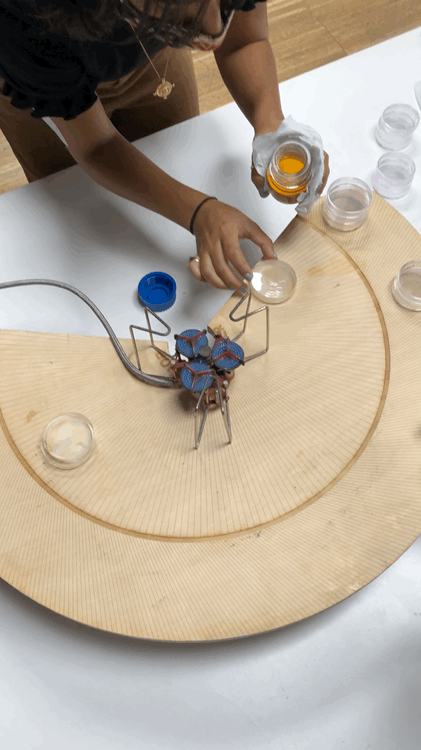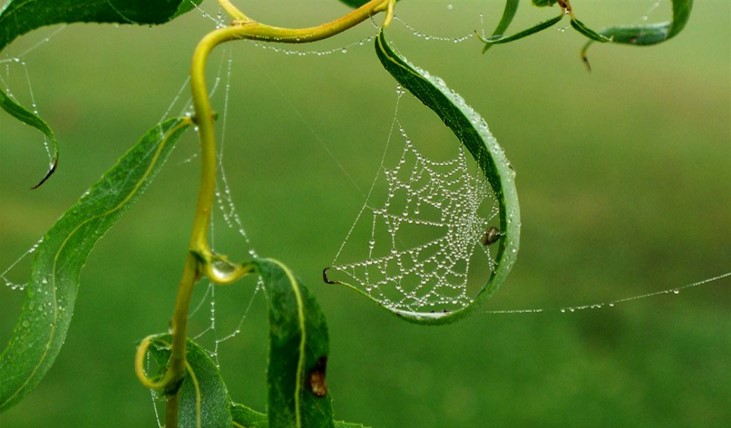EXPERIMENTATION IN CLASS
First, we prepare the environment before to pick the samples

We were separete in groups, and each group prepare different environments.

We put the prepared bacteria environment in Petri dishes near a hot temperature to avoid contamination.

I picked two samples of bacteria, one from my shoes, the other one from my cellphone. And, they start growing through the days.s

ELABORATING LAUREL ESCENTIAL OIL
Great and very laborious job.

TESTING SOIL, PH MEASUREMENT

HYPOTHETICAL DESIGN ORGANISM DESCRIPTION
: : : M U T A N T:::::::: S P I D E R - L E A F : : :
To use two natural species that are already naturally integrated into the habitat to the behavior of one of them, to be used by humans.

To generate the mutant, took monomers from the spider that generates the STRENGHT and ELASTIC of its silk and put them in to a tree with big leaves or directly to the leaves; to been used as a textile fabric.
The spider silk is a biopolymer that generates spider silk, it has monomers which ones conteins its properties, Major Spidroin Protein 2 MaSp1 contributes strength to the fiber, while Major Spidroin Protein 2 MaSp2 contributes elasticity (4). In addition, "spider silks are torsionally superelastic in that they can reversibly withstand great torsion strains of over 10^{2-3} rotations per cm before failure"... (3). Both have to be put into the "plant" in proportions that are required for the textile to work as we have it programmed, we could also have different textile options combining both monomers.
References:
SPIDroin EngineeRing with chroMoprotein And Natural dye - IGEM
-
Optically_probing_torsional_superelasticity_in_spider_silks-RESEARCHGATE
RESEARCH PAPER SYNOPSI
Electrochemical Characterisation of bio bottle voltaic BBV Systems Operated with Algae and Built with Recycled Materials
Electrochemical Characterisation of bio bottle voltaic BBV Systems Operated with Algae and Built with Recycled Materials
The paper explains why and how we can generate renewable energy with algae through photosynthesis using recycling materials.
The paper explains that photoelectrochemical systems are an emerging possibility for renewable energy, exploiting photosynthesis algae to transform the energy of the sun light into electricity. The used algae are Chlorella sorokiniana.
It uses Biophotovoltaic systems to provide a natural resource, solar cells use the photosynthesis activity of microalgae to harvest solar energy; during the photosynthesis, water photolysis results as the splitting of water into protons, oxygen, and electrons which are kept in the surface of the water to being used as an anode and cathode later in the experiment.
Materials they used to do the experiment are recycled PET plastic bottles to contain the algae, the algae, three aluminum recycled can which works as an anode inside the plastic bottle. The algae Chlorella sorokiniana, a plastic lid that hosts the cathode and copper connectors.
All of these, to create the Bio Bottle Voltaic BBV System. As a result shown in the paper, algae culture and the biofilm it generates weren´t affected by the aluminum in it; algae can generate electricity using recycled materials. However, the energy output is very low to turn up equipment that we usually use, but it was used in art events and might be shown as a toolkit in schools, as the paper suggests. Apparently, in order to obtain results to be used in daily life, it is required to have low-energy devices off-grid.